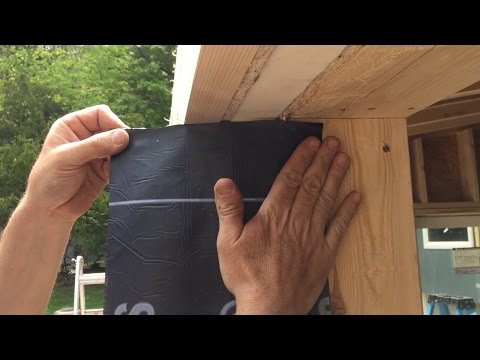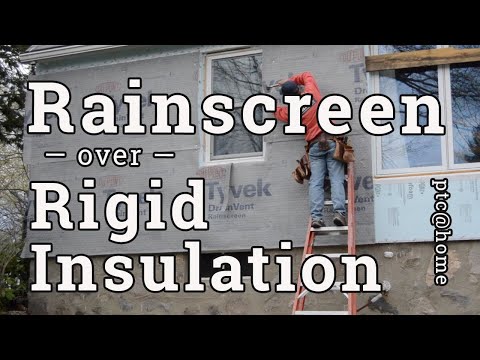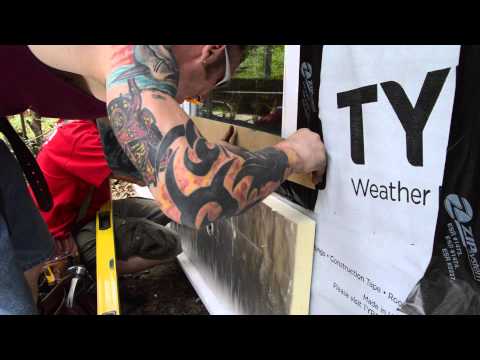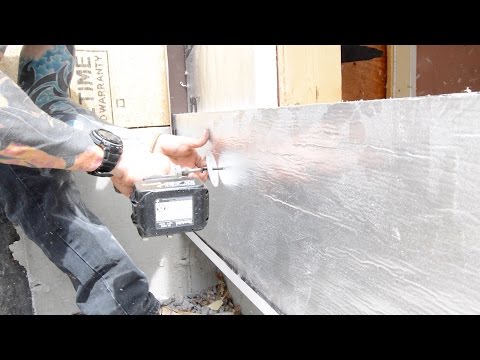A thermal break and solid backing puts the window on the outer face of a thick wall. Now, there's room on the inside window sill for cats and bowling trophies
An 'outie' window is one that is set flush to the outer face of a thick wall. Peeling back the layers, the process begins at the beginning: the bottom of the wall, where a bug shield is added to keep insects out of the foam layers. It is C-shape coil stock bent onsite with a brake.
Step by step outie window installation:
- The top leg is taped to the wall sheathing with contractor tape.
- Tape the seams in the OSB with flashing tape to establish the primary air barrier.
- Add house wrap according to the manufacturer’s specifications and then install the first layer of foam to the walls.
- Plan the pieces for the second layer to have perpendicular seams, and to allow a continuous run under the window sill.
- Window bucks will thicken the other three sides of the window opening and provide solid nailing for the flange.
- The buck should be the same thickness as the next layer of insulation.
- Cut an angle from the foam at the bottom of the rough opening to slope outward, and then install pan flashing, extending up the side jambs.
- Cover the jambs with peel and stick, overlapping the pan flashing and extending into the opening enough to bridge all of the layers back to the rough frame.
- Now, you can set the window, plumb, square, and centered in the opening.
- Tape the side flanges with flashing tape…
- ...and form a z-flashing over the head flange, extending up the buck and onto the first layer of insulation.
- The rest of the second layer can go up now, piecing in the sides and running a continuous strip over the window.
- The insulation is then taped to the window bucks as are the seams.
- The bottom is left open to drain and sealed inside with low-expansion foam or sealant.
- Top it off by sealing the corners with wide pieces of flashing membrane.
Now it’s time to pat yourself on the back because you’ve got an airtight wall that won’t be dogged with water problems.
—This detail is based heavily on the process covered in Superinsulated Sunroom in Wayland, MA. Thanks to David Joyce for opening his jobsite and providing technical assistance.











